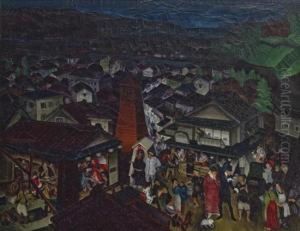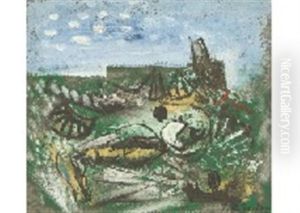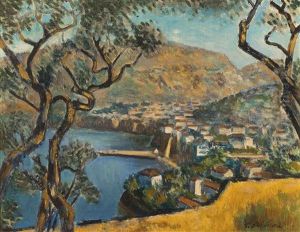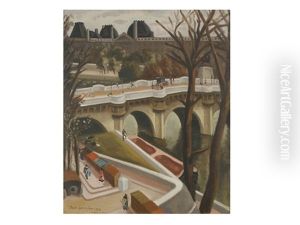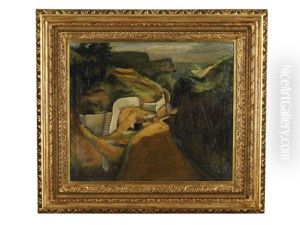Toshi Shimizu Paintings
Toshi Shimizu was a Japanese artist, born in 1887 and passing away in 1945, whose career spanned a tumultuous period in both Japanese and world history, encompassing the Meiji, Taisho, and early Showa periods. Shimizu was known for his contributions to the development of Western-style painting (Yōga) in Japan, a movement that sought to incorporate European techniques and perspectives into Japanese art. Despite the traditional Japanese preference for ink painting and ukiyo-e woodblock prints, Shimizu, like many of his contemporaries, was drawn to the realism and expressive capabilities of Western art forms.
Shimizu's early years were marked by a rigorous study of both traditional Japanese and Western art techniques. This period of intense learning and experimentation laid the foundation for his later works, which adeptly combined elements from both traditions. His paintings often depicted scenes from everyday life, landscapes, and portraits, imbued with a sensitivity to light and shadow that reflected his study of European masters. Shimizu's work was characterized by its delicate balance of realism and impressionism, a testament to his ability to synthesize diverse artistic languages into a coherent and unique style.
Throughout his career, Shimizu was active in the Japanese art scene, participating in various exhibitions and becoming a member of influential art societies. His contributions were recognized by his peers and by later generations, as his works were included in national collections and exhibitions both in Japan and abroad. Despite the challenges posed by the changing political and social landscape of Japan during his lifetime, Shimizu's art remained focused on the beauty of the mundane and the pursuit of artistic excellence.
Shimizu's legacy is that of a bridge between cultures, as he was among the pioneers who introduced and adapted Western painting techniques to the Japanese art world. His death in 1945 marked the end of an era but also solidified his place in the annals of Japanese art history. Today, Toshi Shimizu is remembered not only for his artistic achievements but also for his role in the broader narrative of cultural exchange and the evolution of modern Japanese art.
